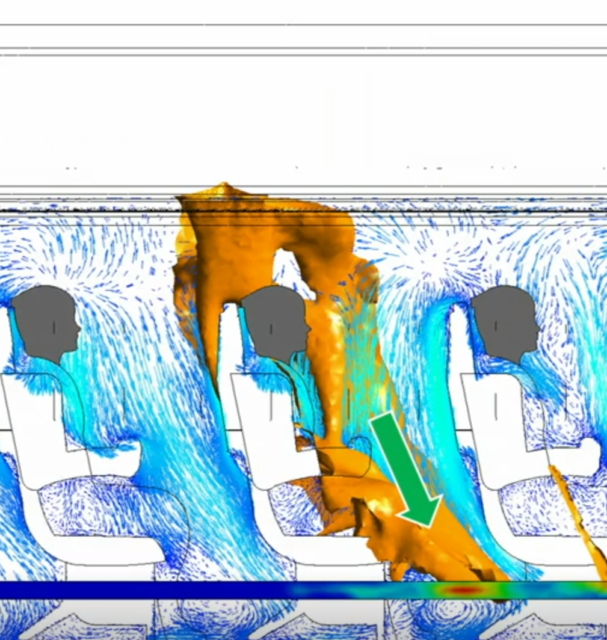This blog is not intended as advice. It is for educational and research purposes only. Read this disclaimer first if you want to read this post.
International air travel is perhaps the most important factor in the rapid spread of pandemics. It is not only the movement of infectious passengers and crew, but the infection of others on the aircraft.
I suspect much of the infection is from the pattern of air circulation that fails to minimise the spread of infectious droplets. Already many people report respiratory ailments after a long flight.
in 2015, a seventeen year old student Raymond Wang used CFD (Computational Fluid Dynamics) to model the air flow on a passenger aircraft and developed a USD$5/ seat modification that he said would reduce the risk by a factor of 55. His TED talk is fascinating and worth watching:
Raymond Wang: How germs travel on planes — and how we can stop them

To my knowledge, this sort of cabin ventilation has not been installed on commercial aircraft, but it would have a profound effect on the number of people getting infected with COVID-19.
The expertise in CFD in companies like Boeing and AirBus is massive and this sort of thing could be done my them very easily with much greater precision and effectiveness. Given that Boeing has lost a lot of trust with the crashes and grounding of the 737 Max, there is a huge opportunity to make their aircraft cabin ventilation much safer and use this as a major marketing advantage. perhaps as SafeAir or SafeVent.
I used to distribute hundreds of agar plates for different bugs and fungi to my students. They swabbed everything (don’t ask). Toilet seats, telephone handsets and lift buttons were low risk, but the servery counters and fabric arms of seats were the most infected items. I suspect that the fabric in aircraft seats may also have a significant rote of infection and evaluation of this and perhaps there should be a move to a seat material that was comfortable but easy to decontaminate. A premium is paid for leather seats in cars. I suspect leather or a synthetic leather for aircraft may be the best option.
I would be astonished if a light spray of disinfectant down the aisles of aircraft did little but exposure the sprayer to the aerosol and left much of the seat fabric contaminated, whilst missing many of the most touched surfaces. The plastic seat trays may likely allow for longer survival of bugs like COVID-19.
